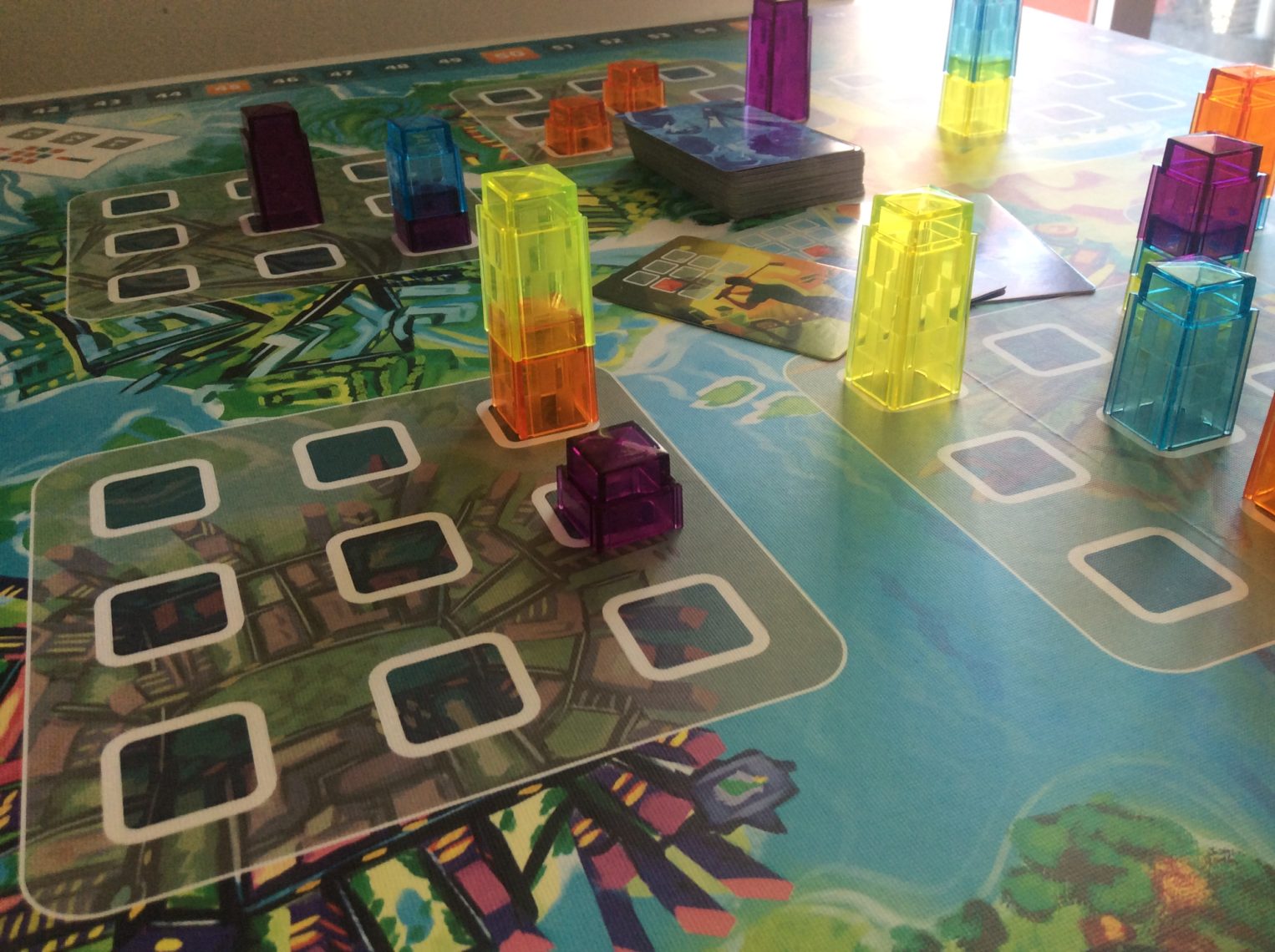The year before Settlers of Catan won the Spiel des Jahres and began its meteoric rise to global domination, kick-starting the Tabletop boom, Andreas Seyfarth, of Puerto Rico fame, released his own SdJ-winning game.
Manhattan is one of the most cutthroat light strategy games you’ll ever play.
The original edition of Manhattan from German publisher Hans im Gluck won the SdJ for a reason: it is a simple to learn strategic masterpiece of area control, and hand management. It’s also a vicious, stab your friends in the face, sort of experience. The downsides to it were that it was out of print for many years, and it was hideously ugly.

A few years ago Foxmind Games fixed both those problems, by reprinting it in a beautiful, brightly coloured edition.
When some companies release reprints of old games, they often tinker with the rules (sometimes for the better, and sometimes not), but Foxmind was smart. They didn’t do anything but change the look of the game.
Gone are the dour, grey board & cards, and the baffling player colour choices. In their place is a brightly coloured board depicting skyscrapers soaring out of various natural landscapes, vibrant cards depicting yuppies doing yuppy things, and translucent Jolly Rancher-looking player pieces.

While the game is now more pleasing to look at, I must admit that the mid- ‘90s German Brutalist aesthetic of the original did convey the theme of the game in a way that the candy-coloured reprint does not.
But enough about aesthetics! Let’s talk game play.
Players are real estate developers, trying to build more and more, ever- taller towers throughout the six cities on the board. Each city has nine different blocks to build in, and players score points for how many buildings they own, how many cities they have majority control over, and for having the tallest tower in the world.
Players’ pieces are floors of buildings. They come in one-, two-, three-, and four-storey sizes. At the beginning of a round each player secretly picks six of their 24 building pieces to use. When all players have used all 6 of their selected pieces, the round is over and the board is scored. After four scoring rounds, the game is done and the player with the highest score wins.
On your turn you play a card from your hand of three and place a building piece on the board. You pick which city to build in, but the card you play determines which block you are building on. Each player sits at one edge of the board, and the cards are played from your perspective on the board, so the same card played by two different players will lead to building on different blocks, even if they picked the same city.
Building on an empty block can be done with any size piece from a player’s selection, but if you want to build onto an existing tower, you will need to use a big enough piece, and if you don’t have one, you will have to build somewhere else.
A tower is owned by whoever played the top piece on the building. If you want to add to someone else’s tower (thus taking ownership of it), you must play a piece that gives you as many floors in the tower as the current owner has.
Example, if the owner of the building has three storeys in it, and you have none, you will need to play a three or four storey piece on top. But if you already have two floors of the building, all you need is a single storey piece to take control of the building back.
After you play your card and add your piece to the board, draw a new card. If you forget to draw a new card, and the player who goes after you draws their replacement card, you are out of luck, and do not get to refill your hand until the end of the current round and the board gets scored. Trust me, you will forget to draw at least once the first time you play.
In addition to scoring one point for each tower you own when it’s time to score the board, if you own more towers in a city than anyone else, you score two points for the city. There is also a three point bonus awarded to the player with the single tallest tower in the world. If two or more towers are tied for height, no one gets the bonus.
Who is Manhattan for? The game is billed as a 2-4 player game, but like Euchre or Mahjong, don’t bother playing with any number but four. It just won’t be as satisfying.
It is for players who are looking for a game that doesn’t have a complex set of rules, has luck (the card draw), but has mitigation of luck as well (you have a hand of three cards to choose from).

It is definitely for people who want a competitive game. Players will often gang up against the leader, but this isn’t a game of co-operation or alliances. Any deals you may strike are fragile, and will collapse the moment it is to one player’s advantage to reneg.
Not all Spiel des Jahres winning games are made equal, but Manhattan is a worthy addition to any gamer’s collection, whether you are new to the hobby, or have hundreds of games on your shelves.
Comments
No comments yet! Be the first!